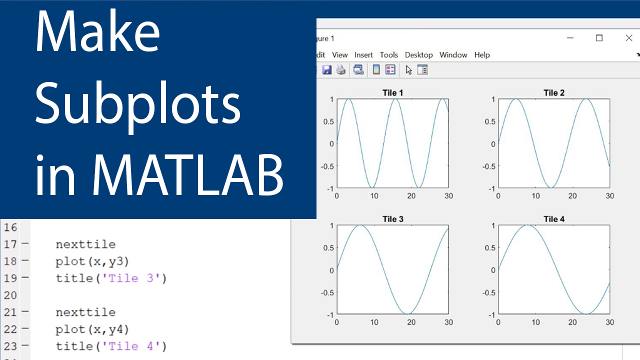

There might be other axes objects in your figure if it's more than just a simple plot. Let’s define two by two grid that means the plot will have two rows and two columns that mean the figure will contain four plots. To use the subplot () function, we first have to define the number of rows and columns in the figure. The condition of the empty tag is to exclude the axe handles of legends, whose tag will be legend. If we want to plot multiple plots in the same figure, we can use the subplot () function. The first line finds all the objects under figure_handle of type "axes" and empty tag (''). % find all axes handle of type 'axes' and empty tagĪll_ha = findobj( figure_handle, 'type', 'axes', 'tag', '' )

1:2pi subplot(2,2,1) plot(x,sin(x)) subplot(2,2,2) plot(x,cos(x)Octave has been mainly built.
#SUBPLOT IN MATLAB HOW TO#
If there are many subplots, and collecting their axes handle one by one does not seem a clever way to do the job, you can find all the axes handle in the given figure handle by the following commands figure_handle = figure How to plot arrow with data coordinates in Matlab. You should be able to zoom in all the subplots simultaneously Plot(+10) % Plot random stuff here as an example This video explains how to display multiple plots in the same figure using the subplot function.Buy my MATLAB/SIMULINK Course at udemy for 9.99 Onlyhttps://. Ha(2) = subplot(2,1,2) % get the axes handle when you create the subplot Plot() % Plot random stuff here as an example Following is a quick example for your case ha(1) = subplot(2,1,1) % get the axes handle when you create the subplot Draw 2 plots on top of each other: import matplotlib.pyplot as plt Example. Use linkaxes as Yair and Amro already suggested. Draw 2 plots: import matplotlib.pyplot as plt Example.


 0 kommentar(er)
0 kommentar(er)
